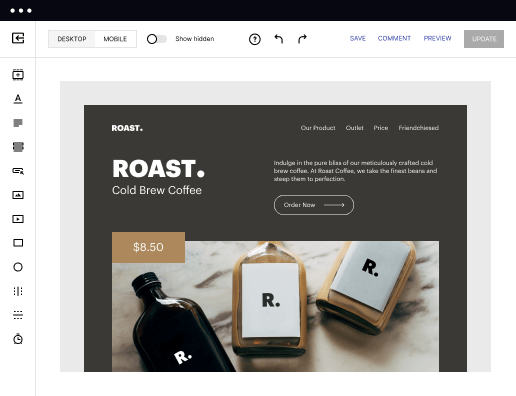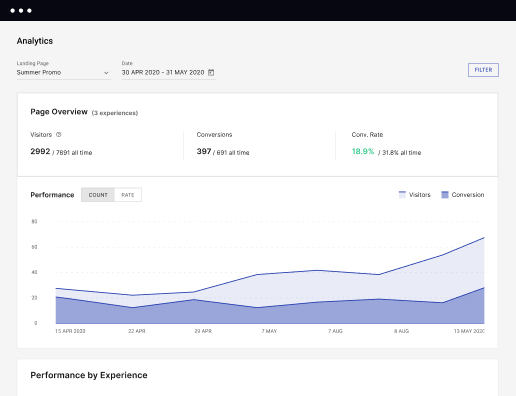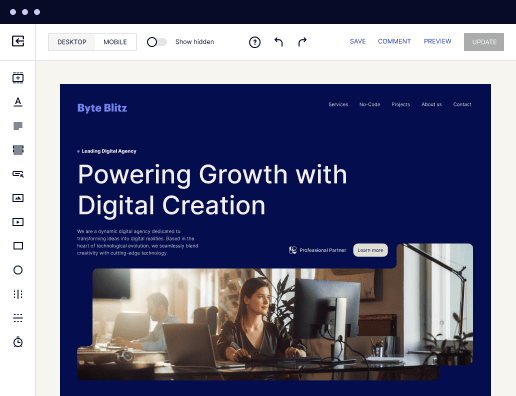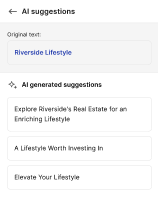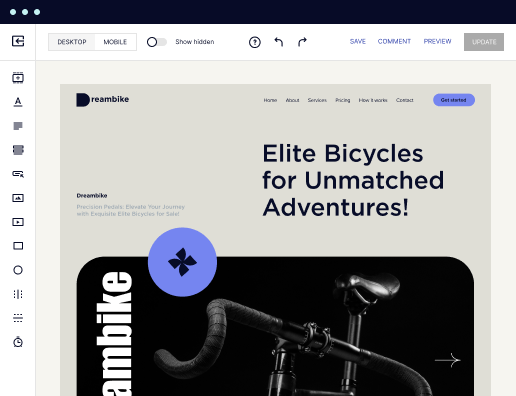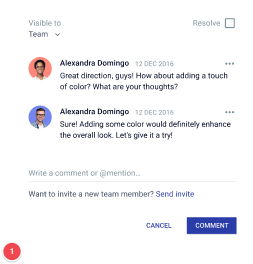Make your 500 internal server error page optimized for Desktop computer
Instapage empowers you to slash costs, skyrocket conversions, and deliver tailored experiences on Desktop computer.
Building your 500 internal server error page on Desktop computer with Instapage
When it comes to managing your online presence, a well-crafted 500 internal server error page can significantly enhance user experience and maintain your brand's credibility. Instapage empowers marketers to create this page efficiently, leading to reduced costs and increased conversions. With its intuitive design and powerful features, you can craft a customized error page that resonates with your audience, fostering trust and loyalty.
Understanding the Need for a Custom Error Page
Having a dedicated 500 internal server error page is crucial. It helps in managing user expectations and can redirect users toward actionable content or support. Here's why you shouldn't overlook this feature:
- User Experience: A personalized error page liaises with your users’ concerns and keeps them engaged with your brand.
- Brand Continuity: Maintaining branding elements on this page helps in ensuring consistency across your site.
- SEO Considerations: A customized page can also aid in retaining search engine rank by providing a fallback for lost pages.
Step 1: Crafting Your Error Page Layout
To start building your page using Instapage, follow these steps:
- Select a Conversion-Focused Layout: Navigate through Instapage's extensive library to find a layout that fits your brand’s identity.
- Utilize Instablocks: Save time by using pre-designed content blocks to quickly add elements like images, texts, or buttons.
- Customize the Design: Adjust colors and fonts to align with your brand, ensuring a cohesive look across your online presence.
Step 2: Adding Dynamic Content for Engagement
Dynamic content engages users by providing them tailored experiences. Here are key features to include:
- Dynamic Text Replacement: Personalize your error message based on the user’s search query or previous interactions.
- AdMaps: Align specific ads to unique pages, guiding users towards pertinent solutions.
- Data Tools: Use analytics to track user engagement on the error page and make informed adjustments.
Step 3: Testing and Optimizing Your Page
Once your page is live, ensure it is optimized for performance through A/B testing and detailed visitor tracking:
- Conduct A/B Tests: Experiment with various headlines and CTAs to determine which version drives better engagement.
- Utilize Heatmaps: Analyze user behavior on your page to understand what captures attention and what needs improvement.
- Monitor Analytics: Regularly review performance metrics to make data-driven adjustments that improve conversion rates.
By following this step-by-step approach, you can build an effective 500 internal server error page that not only maintains your brand's integrity but also increases engagement.
Ready to start building your optimized error page? Sign up for Instapage and take your marketing to the next level today!
Get more out of Build your 500 internal server error page on Desktop computer
Improve your Quality Score with quick load technology for landing pages
Increase conversions with content that aligns with your ads and audiences
Achieve maximum ROI by scaling your marketing initiatives
Leading the way in building high-performing landing pages





FAQs
See how to build your 500 internal server error page on desktop computer in action
Ready to skyrocket conversions?
Supercharge your ad campaigns with high-performing landing pages.
Get started


